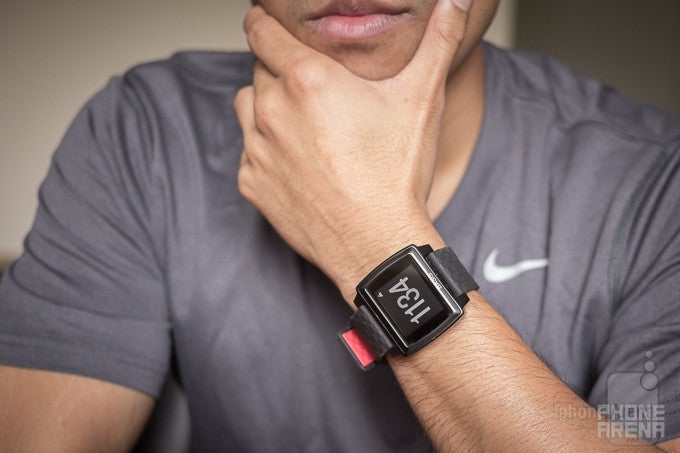Basis Peak Review

Introduction
Fitbit might seem to have hammered down the wearable fitness tracker market, but it’s surely not the only player in town making moves, since the space is heavily saturated by offerings from not only the fitness-only folks, but even smartphone makers as well. You may or may not have heard of them, but San Francisco based Basis, which is now owned by Intel, has responded accordingly by bringing to market its ‘ultimate’ fitness and sleep tracker in the Basis Peak – a watch-like wearable that aims to compete against the likes of Fitbit, Microsoft, Jawbone, and much more. Tracking all sorts of motion and gathering data is one thing, however, making all of what it accumulates in the process, and delivering it in a meaningful way, is what separates the good from the best in this class.
Packaging contains:
- Basis decal sticker
- microUSB cable
- Charging cradle
- Users manual
Design
Not one for the theatrics, the design is as utilitarian as it can get.
Don’t bother getting the Basis Peak if you’re all about the design and aesthetics, mainly because it’s as utilitarian as they come. As opposed to the sporty and discrete styles we’ve seen in this category, the Basis Peaks opts to favor a watch-like design first and foremost. Compared to the Fitbit Surge, which we find to be in the same caliber as this, the Basis Peak is blocky and dull. It doesn’t even attempt to be polarizing in any way with its design.
Despite that, we’ll give it credit for being solidly constructed – more so than the Surge and most others as well, thanks in part to its forged aluminum body. To tell you the truth, though, the body feels almost plastic in nature, but regardless, the matte black finish of our review unit has a pleasant uniformity to it. At the same time, too, it feels almost indestructible, to the point that it offers water resistance up to 5ATM (50 meters/165 feet). Therefore, there’s no worry about sweaty workouts, the rain, or even a long dip in the pool. In fact, we even used it on a quick swim in the ocean with no issues at all!
The design isn’t flattering, but boy do we dig the soft 3D textured silicone strap, which can be easily swapped for any of the other 23mm options that Basis sells through its site. All that’s necessary is to move the pin switch on the underside. Wearing it long term, we never felt it to be too irritating, so the comfort is maintained throughout – while adjusting it is a cinch too!
Looking around the Basis Peak, you’ll notice that there are no buttons or openings of any kind – except for the underside, which houses its various sensors. The potent green glow of the heart rate sensor is evident, almost blinding in the dark, but it also features a 3-axis accelerometer, skin temperature, and Galvanic skin response sensor.
Display
There’s nothing fancy here, but at least it has the essentials.
Well, it’s certainly not techy when you think about the various display technologies out there, but the Basis Peak comes with a 1.26-inch 144 x 168 touchscreen, which is monochrome – though, with backlighting to make it visible in the dark. Obviously, it’s simply here to provide us instant access to relevant information and nothing more. Outdoor visibility is no problem here, as well as its response, but activating the backlight can be finicky. Essentially, we need to perform a swipe up gesture along the right edge of the screen to turn it on – while a swipe down turns it off.
Like we said, there are no theatrics with this display whatsoever. It tells the time, we can check out our heart rate, and even view our step tally for the day. However, we need to use the accompanying mobile app to view the results from previous days.
Basis Peak app
Workouts are dissected to deliver a deeper understanding of your activities.
The Basis Peak is compatible with Android and iOS, so downloading the accompanying Basis Peak app is necessary to make use of the data the unit compiles. While the app covers a comprehensive space, as well as supplementing the experience with a motivational aspect with various ‘habits,’ the layout and organization is a little confusing. Yes, the data is chopped down and presented in useful line and bar graphs, but there’s no way to view the results from a monthly view.
Basically, there are two main views we feel are most important with the app – dashboard and activity feed. With the former, it merely breaks down the daily totals for average heart rate, calories burned, steps, and sleep. Meanwhile, the latter activity feed shows us our activity chronologically. Even though the app covers a wide space and goes into detail about our activity, it’s just missing that monthly view to really encompass the entire experience full circle.
Connectivity
Pairing it with an iPhone 6 Plus, the Bluetooth connection is maintained for up to roughly 20 feet in our experience. Mainly a fitness tracker first, it’s nice that it also offers some ‘smart’ functions as well – such as text message notifications, calendar reminders, and phone calls. Although it’s mentioned to provide email notifications as well, it just never seemed to work with our time using it. Still, it’s nice that the entirety of a text message can be read directly on the Basis Peak’s screen.
Performance
No worries about setting anything because it’s all automatic.
At the core of it all, the Basis Peak offers minimal interaction, which is a good thing! That’s the beauty about this fitness tracker, seeing that its various sensors are able to determine what we’re doing and just track the correct activity. If we’re walking, it knows we’re walking. If we’re running, it senses the movements and knows we’re running. And if we’re sleeping, it knows that too! All of this, everything, is done without having us to tell it to do so. Who doesn’t like that?
Hardcore fitness junkies will adore that the Basis Peak offers real-time heart rate tracking, giving us the most accurate calorie burn based on our activity, height, and weight. Conversely, sleep tracking is an automatic thing, which is one less thing to remember. This thing is incredibly sensitive, where it’s able to know how many times we toss/turn in our sleep. However, it falls victim to phantom step tracking, so the results can be a bit more generous than you’d think.
Battery
4 days of battery life equates to an average result.
Endowed with a 190 mAh battery, the Basis Peak makes good on its promise of delivering 4 days of battery life. Our experience pretty much gets us there, which we find to be average amongst the fitness tracker space.
Conclusion
Attached with an MSRP of $199.99, it’s in direct competition to notable fitness trackers like the Microsoft Band and Fitbit Surge. Compared to them, the Basis Peak is a simple, no-frills fitness wearable that tracks activity with minimal interaction. Needless to say, that’s a great asset because it’s something we just wear day in and day out – without the hassles to remember about setting it into a particular mode. However, it’s not as attractive looking with its design.
For the price and whatnot, it suffices enough for the essentials, but both the Fitbit Surge and Microsoft Band offer a higher degree of functionality – while also sporting better designs too! Beyond that, those aforementioned wearables dissect activities into specific categories, gaining even more insight into our overall activity level.
Don’t get us wrong, the Basis Peak is a good fitness tracker, but considering that the other two options are within the same price category, it’s really tough to recommend going with this one knowing the expansive functionality and tracking that the others offer.












Things that are NOT allowed: